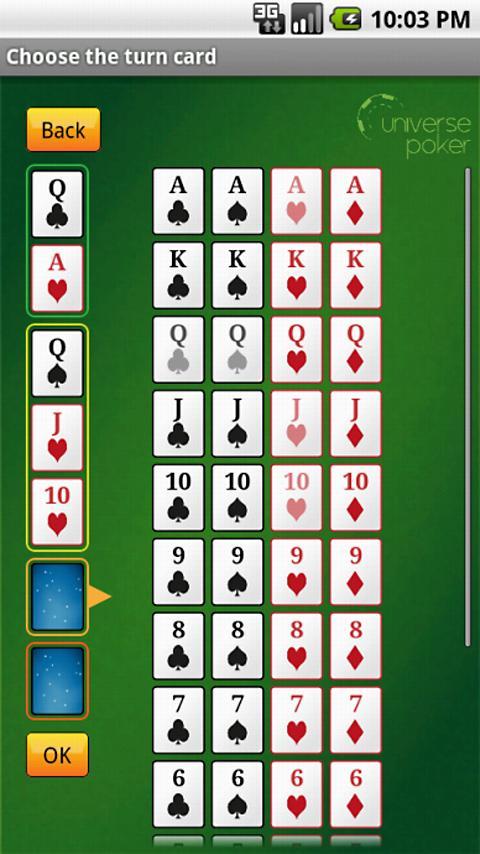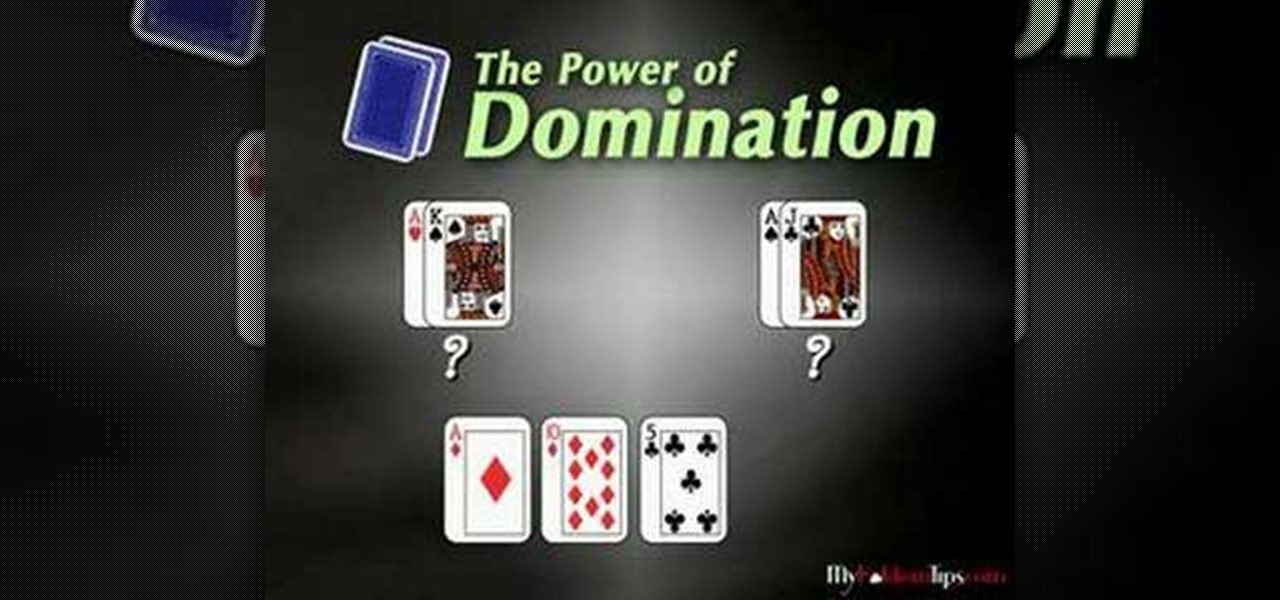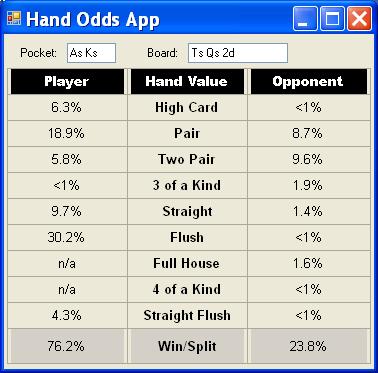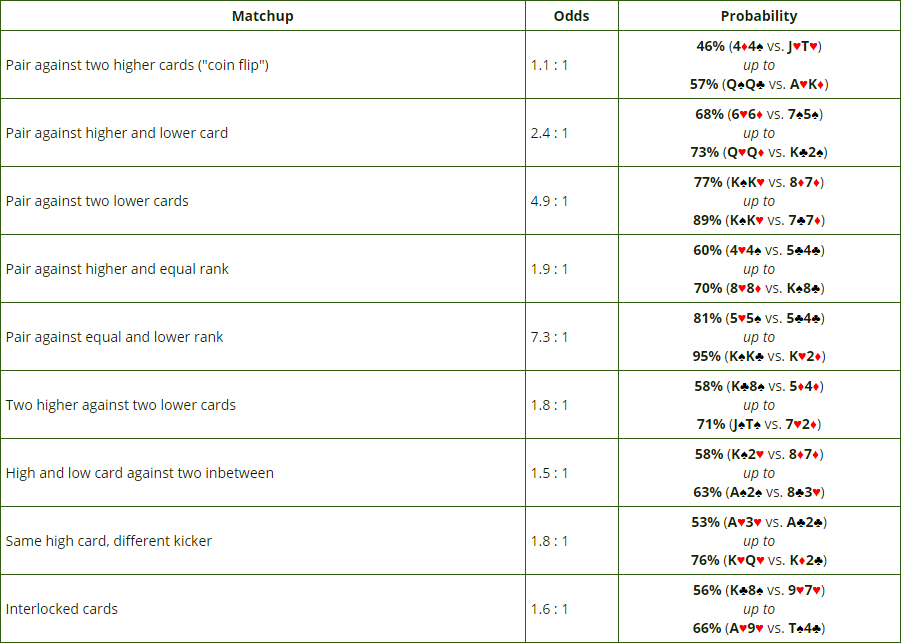One of the most basic but also the most crucial skills for a poker player is the ability to quickly calculate how many outs you have to a winning hand.
- Texas Holdem Probability Chart
- Texas Holdem Hands Chart
- Poker Hand Odds Calculator Preflop
- How To Calculate Texas Holdem Pot Odds
Before you can begin to calculate your poker odds you need to know your 'outs'. An out is a card which will make your hand. For example, if you are on a flush draw with four hearts in your hand, then there will be nine hearts (outs) remaining in the deck to give you a flush.
- Matthew Hilger ('Texas Hold'em Odds and Probabilities') has more tables of probabilities than any of the others, but leaves the reader uncertain of how to proceed in doing his/her own calculations. Mike Petriv ('Hold'em Odds Book') covers the same ground as does Roe though Petriv focuses a bit more heavily on the math whereas Roe provides the.
- Learn how to calculate your pot odds and becoming a winning player. Learn how to calculate your pot odds and becoming a winning player.
- Odds are a mathematical way of explaining how likely or unlikely something is to happen. You can use odds in two different formats. The first one is a percentage and the second is a ratio. Some players find percentages easier to work with, but you need to learn how to consider Texas holdem odds as ratios.
It may seem complicated at first, but in reality it only takes a little practice for it to become second nature.
When you play poker the best-case scenario would be to always put your money in with the best hand. That just isn't the reality, though. You are going to put your money in bad from time to time.


Metric woodruff key slot dimensions chart. Related Reading:
How to Count Your Outs
In those cases where you are putting your money in bad, the idea is that you are able to make a hand on a later street that is better than your opponent's. The cards that give you that winning hand are known as 'outs.'

An example: You have A♣K♣. Your opponent accidentally shows you J♦9♦10♠J♣3♣ board. How many outs do you have?
Well, you have two overcards to his jack, meaning that three aces and three kings are outs to a higher pair. You also have four queens that would give you the nut straight, and you have nine clubs that can give you the nut flush.
Of course, you double-counted one of your outs. You can't count the queen of clubs twice. So when you recount, you have a total of 18 outs. That's a lot of cards that can come on the turn to help you.

An 18-out draw is very big, and actually makes you a favorite against top pair on the flop.
Put Your Opponent on a Hand Range
Texas Holdem Probability Chart
In reality it's never going to be obvious as in the above example - your villain is not going to actually show you his cards. So you must be able to put him on a range of likely hands. Once you have his approximate range, it becomes easier to calculate your outs.
Genting casino birmingham parking pass. You're never going to be able to put your opponent on an exact hand, so calculating outs will never be exact. Your calculations will ultimately only be as accurate as the hand range you put your opponent on.
If in the example above you give your opponent J♠J♥, you have significantly fewer outs. No longer do your three remaining aces and kings give you the winning hand.
Furthermore, you can hit your hand on the turn and still lose should the river pair the board.
When calculating outs, keep in mind that it's not an exact science and that sometimes a card you may think is an out may not actually give you the best hand.
What Are 'Half Outs' in Poker?
Sometimes your perceived outs only count as half outs. Let's take a look at an example:
Slot waveguide. You have 8♠9♠. The board is 10♥J♥3♦. You have four sevens and four queens that will give you a straight. Meaning you have eight outs. Correct?
Yes and no. Sometimes you are going to hit your straight, but that card will also make your opponent a flush, improving you to a second-best hand.
Texas Holdem Hands Chart
In this example the Q♥ and the 7♥ are not worth a full out to you. Thus you should only count them as half outs each. Meaning in reality you only have seven outs.
Counting the Q♥ and the 7♥ as half outs accounts for those times where you will make your straight yet still lose to your opponent's flush.
What Are Hidden Outs in Poker?
Occasionally you are going to come across a hand where you may even have hidden outs. They are called hidden outs because they may not immediately help your hand but they may actually hurt your opponent's hand.
A quick example:
You hold A♥A♣5♠6♣9♦K♥ board. Your opponent holds 6♠5♥ for two pair. On the river you can be saved by the A♦ or the A♠, which will give you a set, but you can also be saved by the board pairing either the nine or the king.
This would counterfeit your opponent's two pair and give you a higher, winning two pair. While neither a nine nor a king actually hits your hole cards, it still improves your hand to a winning two pair. This is what is known as a 'hidden out.'
Poker is Outs and Pot Odds
As with honing any skill, practice makes perfect. Once you are able to accurately calculate your outs you will be able to correctly determine the pot odds you require to continue with a hand.
And once you have that down, you've pretty much mastered poker. Poker, simplified, is two things:

Metric woodruff key slot dimensions chart. Related Reading:
How to Count Your Outs
In those cases where you are putting your money in bad, the idea is that you are able to make a hand on a later street that is better than your opponent's. The cards that give you that winning hand are known as 'outs.'
An example: You have A♣K♣. Your opponent accidentally shows you J♦9♦10♠J♣3♣ board. How many outs do you have?
Well, you have two overcards to his jack, meaning that three aces and three kings are outs to a higher pair. You also have four queens that would give you the nut straight, and you have nine clubs that can give you the nut flush.
Of course, you double-counted one of your outs. You can't count the queen of clubs twice. So when you recount, you have a total of 18 outs. That's a lot of cards that can come on the turn to help you.
An 18-out draw is very big, and actually makes you a favorite against top pair on the flop.
Put Your Opponent on a Hand Range
Texas Holdem Probability Chart
In reality it's never going to be obvious as in the above example - your villain is not going to actually show you his cards. So you must be able to put him on a range of likely hands. Once you have his approximate range, it becomes easier to calculate your outs.
Genting casino birmingham parking pass. You're never going to be able to put your opponent on an exact hand, so calculating outs will never be exact. Your calculations will ultimately only be as accurate as the hand range you put your opponent on.
If in the example above you give your opponent J♠J♥, you have significantly fewer outs. No longer do your three remaining aces and kings give you the winning hand.
Furthermore, you can hit your hand on the turn and still lose should the river pair the board.
When calculating outs, keep in mind that it's not an exact science and that sometimes a card you may think is an out may not actually give you the best hand.
What Are 'Half Outs' in Poker?
Sometimes your perceived outs only count as half outs. Let's take a look at an example:
Slot waveguide. You have 8♠9♠. The board is 10♥J♥3♦. You have four sevens and four queens that will give you a straight. Meaning you have eight outs. Correct?
Yes and no. Sometimes you are going to hit your straight, but that card will also make your opponent a flush, improving you to a second-best hand.
Texas Holdem Hands Chart
In this example the Q♥ and the 7♥ are not worth a full out to you. Thus you should only count them as half outs each. Meaning in reality you only have seven outs.
Counting the Q♥ and the 7♥ as half outs accounts for those times where you will make your straight yet still lose to your opponent's flush.
What Are Hidden Outs in Poker?
Occasionally you are going to come across a hand where you may even have hidden outs. They are called hidden outs because they may not immediately help your hand but they may actually hurt your opponent's hand.
A quick example:
You hold A♥A♣5♠6♣9♦K♥ board. Your opponent holds 6♠5♥ for two pair. On the river you can be saved by the A♦ or the A♠, which will give you a set, but you can also be saved by the board pairing either the nine or the king.
This would counterfeit your opponent's two pair and give you a higher, winning two pair. While neither a nine nor a king actually hits your hole cards, it still improves your hand to a winning two pair. This is what is known as a 'hidden out.'
Poker is Outs and Pot Odds
As with honing any skill, practice makes perfect. Once you are able to accurately calculate your outs you will be able to correctly determine the pot odds you require to continue with a hand.
And once you have that down, you've pretty much mastered poker. Poker, simplified, is two things:
Poker Hand Odds Calculator Preflop
- Putting your money in good and/or
- Putting your money in with good odds
When you have those two skills in the bag, the rest is easy.
How To Calculate Texas Holdem Pot Odds
More Beginner Strategy Articles: